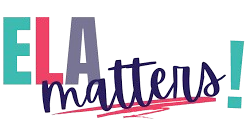“I’m done!” This is one of the most common phrases I hear in my ELA classroom. Ninety-nine percent of the time, my students are far from done, especially when it comes to their writing.
I am always trying to tell my students that step one is to get all our ideas out. It doesn’t need to be perfect. After we get our initial words down, we need to go back and improve them. This is the step that I find my students struggle with the most. They don’t want to go back. They just want to be done.
Once they complete all the steps, fill all the boxes or finish a page, they feel they did it. As teachers, it is our job to help them learn how to go back and edit.
Reading Aloud
The number one strategy that helps me as a writer is stopping and reading my work aloud. I find so many errors this way. As writers, we know what we are trying to say. Sometimes our eyes play tricks on us and we read it as
Checklists
I find that if I am too broad or give my students too much freedom with editing and revising they get nowhere. Checklists that are targeted on a few specific skills tend to be extremely helpful. Some examples might be capitalization, ending punctuation, homonyms, commas or other common trends I am seeing.
Peer Editing
Sometimes our best critics are our friends. Having a friend who is working on a similar assignment can help improve your writing. I also find that as teachers we need to help guide our students with what they are specifically looking at in their friend’s work.
Going Back to Model
Having a model is critical. It helps our students see our expectations and know what we are hopeful they’ll produce. It gives them a sense of what they are accomplishing and makes the assignment realistic and attainable. Using rubrics and a model helps students ensure they have all parts.
Writing isn’t done when we fill a page. This is an important lesson that we must stress to our students. How do you help your students edit and revise?
